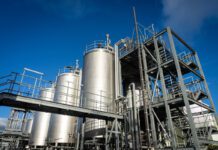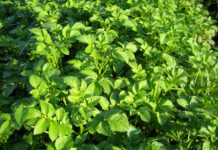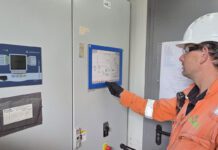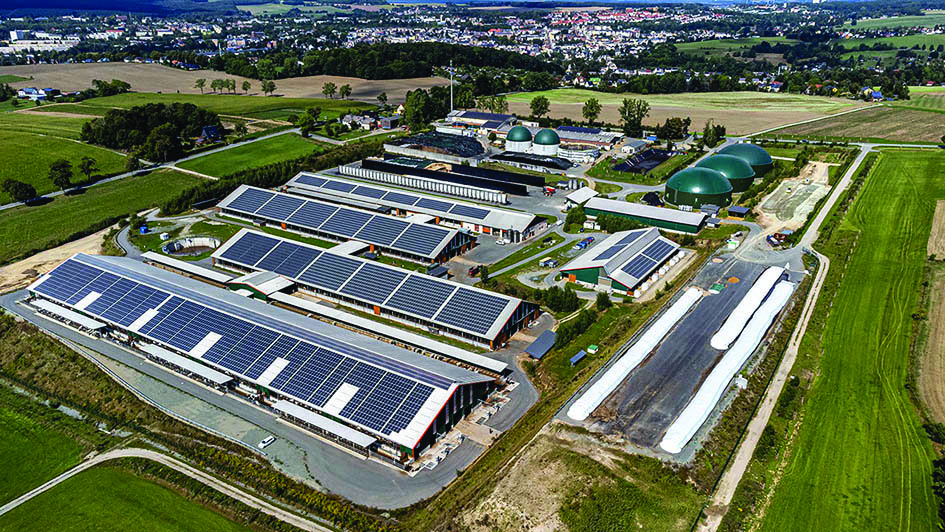
In March, a German agricultural firm commissioned one of Weltec Biopower’s Kumac digestate processing systems. The equipment separates solid matter from water, providing a number of reported benefits, including improved concentration of nutrients (for easier transportation and reduced fertilizer application cost), as the firm explains here.
This is the first Kumac plant to go live in Germany, in addition to the 16 that have been built worldwide to date. The firm, Agrar GmbH Reichenbach, based in the Vogtland region of Saxony, specialises in dairy farming and the cultivation of feed crops. In addition to the dairy farm with 1,400 cows and breeding cattle, the farmers have been operating a biogas plant with an electrical output of 845 kW since 2006. The facilities generate up to 72,000 tonnes of liquid manure and digestate per year.
Every day, the biogas plant feeds 12,000 kWh of electricity into the public grid. In addition, the plant supplies up to 500 kW of heat to small consumers and to the site of the former Paracelsus Clinic in Reichenbach via a heating network. The plant’s main business consists of the delivery of biogas via a 3.2-km raw biogas pipeline to the heating plant of Stadtwerke Reichenbach for the base load supply of flats and social facilities. The amount of electricity generated each year corresponds to the annual consumption of around 6,000 private households.
The introduction of modern technologies and systems such as the Kumac system greatly contributes to the recycling of nutrients and the conversion of liquid manure into compost, fertiliser, animal bedding or biogas substrate, says Weltec Biopower. For the conversion, Kumac makes use of tried-and-tested processes that are fine-tuned to each other.
Fertilizer boost
“In Reichenbach, the output of the Kumac process consists of around 25 percent solid and 20 percent liquid farm manure and 55 percent dischargeable water,” explained Lars Bittermann, Managing Director of Agrar Reichenbach GmbH. “The resulting solid matter and the nutrient concentrate are applied as organic, high-quality fertiliser to our own crops. In this way, long transport routes are avoided.”
“This closes an efficient material flow cycle, and the individual areas of our portfolio interlock perfectly. From the cultivation of feed crops to dairy farming to the utilisation of the liquid manure in the biogas plant and the processing of digestate into fertiliser and water, all components have their place.”
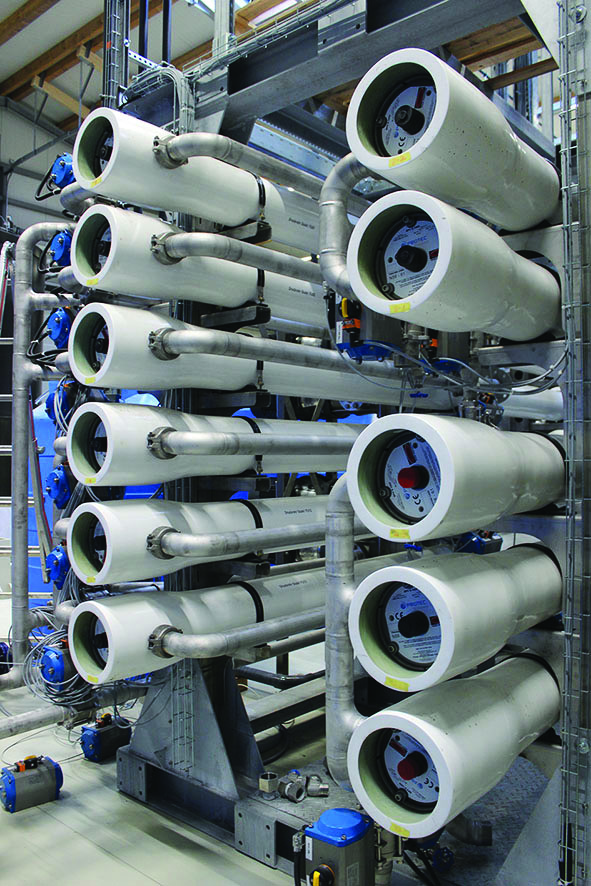
Dry matter reduction
In the first step of the liquid manure and digestate treatment, flocculants are added to the source material. These additives ensure flocculation of even the finest components, facilitating their separation from water. At the same time, they contribute to the reduction of odour emissions. After the material has been squeezed through a belt press via various rollers against a second, water-permeable belt, the solid material can be used directly as fertiliser, compost, animal bedding or biogas substrate with a dry matter content of up to 30 percent.
Subsequently, the liquid phase is passed through a tank in which small particles and suspended solids are separated. Any remaining solid particles are removed by means of a fine filter. In the next step, the filtrate traverses a three-stage reverse osmosis process to remove salts and nutrients. The resulting liquid fertiliser is rich in nitrogen and merely accounts for one quarter of the original volume. Clear water accounts for the greatest share of the treatment products and is currently discharged into the receiving water.
European funding
The scalable modular system can be used for quantities from 70,000 tonnes of liquid manure or digestate a year. Should the processing needs increase, several Kumac lines can easily be combined. “The processing here is almost fully automated, which also minimises the amount of personnel required”, said Bittermann. Operators who decide to set up a system can receive funding from the European Agricultural Fund for Rural Development.



